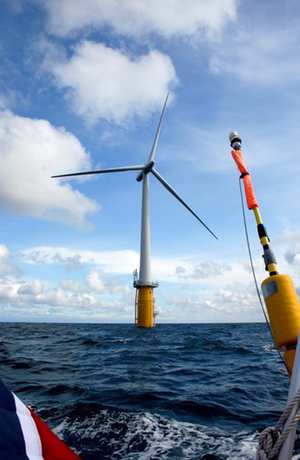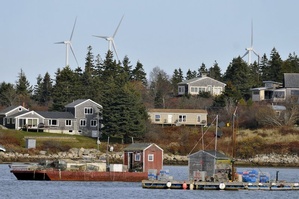The latest on far-offshore floating wind turbines
News, Ocean, Wind turbines Comments Off on The latest on far-offshore floating wind turbines
Regular readers will know that I’m excited by the potentials for far-offshore floating wind turbines. Less construction noise, less disturbance of the seafloor, more construction can take place on land rather than at sea (meaning less loud boat activity)…..it all adds up to much less noise impact in our coastal ocean environment, which is very sensitive to new noise. Not only that, but the winds are stronger farther out.
Renewable Energy World has a great current overview of where the R&D is at today for floating turbines, with summaries of each of the leading designs being tested, and assessment of the likely timeframe (the cautious among them still say we’re a decade away; some are more bullish). Some of the commenters throw in the bonus idea that these installations could add wave energy generators as one way to address the higher costs the floating technologies.
IMAGE: Developed by Norwegian energy company Statoil ASA, Hywind is the world’s first full-scale floating wind turbine. Located around ten kilometers off the southwest coast of Norway, the structure itself is a steel cylinder, similar to a spar buoy, filled with a ballast of water and rocks, which extends 100 meters beneath the sea’s surface. Attached to the seabed by a three-point mooring spread, it can be employed at ocean depths of 120 to 700 meters.
Photo: Trude Refsahl / Statoil


